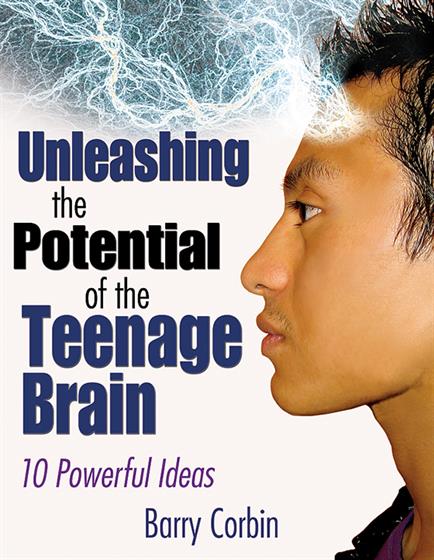Acknowledgments
About the Author
Part I. Discovering the Teenage Brain
1. Introduction: The Creatures in the Classroom! Those Exasperating and Unfathomable Teenagers
How Do We Reach and Teach Those Unpredictable Teenage Brains?
Wanted: A New Approach to Teaching Teenagers!
Why Educators Need to Learn About the Teenage Brain
Brain-Compatible Teaching and the New Science of Learning
The Emergence of a New Pedagogical Model
2. Adolescence and the Teenage Brain--What Is Different and How Do We Know?
Adolescence--Just the Quick Facts!
The Teenage Brain--What We Had Believed
How Neuroscience and Medical Technology Are Changing Our Ideas About the Teenage Brain
The Future of Brain Imaging
3. Big Changes in the Teenage Brain: What We Have Learned and Are Learning
The Teenage Brain--A Work in Progress
From Back to Front: Brain Growth, Neuron Proliferation and Pruning, Myelin Development
What It All Means (We Think!)
Looking Back at Part I : Reflection and Review
Part II. Ten Powerful Ideas About the Brain and Learning and What It Means for Teaching the Teenage Brain
4. Powerful Idea #1: Constructing New Knowledge
What Powerful Idea #1 Means for Teachers: Helping Teenagers Construct Personal Meaning
How It Might Look--A Case Study: "Saving the Old Victoria Street School"
Constructivist Teaching Strategies
5. Powerful Idea #2: Different Ways of Learning
Being Smart-- Human Intelligence
Preferred Ways of Learning--Our Learning Styles
What Powerful Idea #2 Means for Teachers: Teaching to Each Unique Brain
Unleashing the Potential of the Teenage Brain: Six Things You Ought to Do
How It Might Look--A Case Study: "Ms. Taylor's Meteorology Unit"
6. Powerful Idea #3: Making Meaning, Connections, and Patterns
What Powerful Idea #3 Means for Teachers: Developing Pattern Making and Detecting Abilities
Some Strategies for You to Consider
How It Might Look--A Case Study: "Mrs. Parasiuk's Poetry Class"
7. Powerful Idea #4: Whole-Brain Learning
Left, Right, or Both Brains?
What Powerful Idea #4 Means for Teachers: Effective Ways to Make Your Classroom Teaching Whole Brain
How It Might Look--A Case Study: "Whole-Brain Assessment in Mr. Amos' Horticulture Class"
8. Powerful Idea #5: Multiple Memory Pathways
Different Kinds of Memory--Declarative Versus Procedural
Learning and Memory
What Powerful Idea #5 Means for Teachers: Using Multiple Memory Pathways
How It Might Look--A Case Study: "Mrs. Singh's Musical Science"
9. Powerful Idea #6: Physical Activity and Movement
Exercise For the Brain
What Powerful Idea #6 Means for Teachers: Utilizing Physical Activity to Enhance Learning
How It Might Look--A Case Study: "Kinesthetic Learning in High School Biology"
10. Powerful Idea #7: Memory, Learning, and Emotion
Too Much or Too Little?
The Impact of High Stress and Threat
Brain Attention and Focus
Motivation and Engagement
What Powerful Idea #7 Means for Teachers: Managing the Emotional Environment of the Classroom
How It Might Look--A Case Study: "The Affirmative Mr. Hawkes"
11. Powerful Idea #8: Reflection and Self-Assessment
Knowing Oneself
Reflection
Metacognition
What Powerful Idea #8 Means for Teachers: Developing Reflective Learners
How It Might Look--A Case Study: "Feedback and Reflection in the Visual Arts Class"
12. Powerful Idea #9: Social Interaction and Learning
What Powerful Idea #9 Means for Teachers: Providing for Social Interaction and Collaboration
How It Might Look--A Case Study: "A Jigsaw Activity in High School Political History"
13. Powerful Idea #10: Time and Timing
When Is the Best Time?
An Optimal Time to Learn
An Optimal Time Pattern for Learning
The Optimal Times During the Learning Episode
The Optimal Times During the Day
What Powerful Idea #10 Means for Teachers: Taking Advantage of Time and Timing
How It Might Look--A Case Study: "Mrs. Gregory's Lesson Planning"
Looking Back at Part II - Reflection and Review
Part III. The Classroom Environment and What Teachers and Students Should Be Doing
14. The Learning Environment
The Physical Environment
The Socioemotional Environment
The Intellectual Environment
15. The Brain-Compatible Teacher: Changing and Evolving Roles
A Complex and Challenging Profession!
The Teacher as Facilitator, Orchestrator, and Conductor
The Teacher as Coach and Model
The Teacher as Continuous Learner
The Teacher as Monitor, Assessor, and Evaluator
The Teacher as a Resource
16. Teenage Students: Higher Expectations and New Roles
What We Want and Need From Our Teenage Students
Looking Back at Part III - Reflection and Review
Part IV. Now What? So What?-- Reflecting Upon What We Have Learned
17. What Does It All Mean?
A Quick Review: The Important Things We Have Learned
What Do We Need to Do to Help Teenagers Reach Their Potential?
Some Final Thoughts: Opening Doorways to Possibilities
Wanted: An Epidemic for an Idea
Glossary
Suggested Readings
Bibliography
Index



